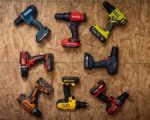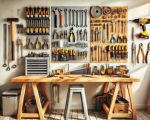- 1-Power-and-Torque
- 2-Battery-Life-and-Runtime
- 3-Build-Quality-and-Ergonomics
- 4-Chuck-and-Bit-Compatibility
- 5-Durability-and-Features
- 6-Case-Study-Workshop-Renovation
- 7-Maintenance-and-Best-Practices
- 8-Where-to-Buy
1. Power and Torque
Choosing from the best cordless drills for heavy-duty tasks starts with motor performance. Look for brushless motors rated at 500–1,000 in-lbs of torque. These high-torque drills handle dense materials like hardwood and metal without bogging down. Variable-speed triggers and multi-gear transmissions let you fine-tune RPM (revolutions per minute) and torque output, ensuring consistent drilling power across a variety of tasks.
1.1 Brushless vs. Brushed Motors
Brushless designs offer up to 30% more efficiency and longer motor life compared to brushed alternatives. By eliminating friction-inducing brushes, brushless drills maintain peak power under load, making them ideal for repetitive, demanding applications.
1.2 Gearbox Configurations
Most heavy-duty cordless drills feature two-speed gearboxes: a low-speed/high-torque setting for driving large screws and a high-speed/low-torque setting for fast drilling. Some advanced models include a three-speed gearbox, giving professionals even greater control.
2. Battery Life and Runtime
Extended runtime is crucial when tackling large-scale construction or renovation projects. The top heavy-duty cordless drill packages pair an 18V or 20V platform with high-capacity lithium-ion batteries—commonly 5.0Ah to 9.0Ah. Higher amp-hour ratings translate to more drilling cycles per charge.
2.1 Fast Charging Technologies
Look for rapid-charging chargers that refill a 5.0Ah pack to 80% in under 30 minutes. This minimizes downtime on the jobsite and keeps your drill ready when you need it most.
2.2 Battery Management Systems
Advanced battery packs include integrated thermal sensing and auto-shutoff to prevent overheating and prolong cell life. Some brands offer Bluetooth-enabled packs that report state-of-charge and health metrics via mobile apps.
3. Build Quality and Ergonomics
Professional-grade tools combine rugged construction with comfortable handling. Magnesium or reinforced polymer housings resist drops and impacts, while rubber overmolds and balanced weight distribution reduce operator fatigue during extended use.
3.1 Grip Design
A slim grip circumference and textured surface improve control, especially when drilling overhead or in tight spaces. Some drills feature adjustable side handles for greater leverage on tough materials.
3.2 Impact Resistance
Look for IP54 or higher ratings, indicating protection against dust and water spray. This ensures reliability in dusty jobsite conditions or light exposure to rain.
4. Chuck and Bit Compatibility
Heavy-duty cordless drills often employ 1/2-inch keyless chucks, offering fast bit changes and secure bit retention under load. Compatibility with SDS or hex-shank adapters expands versatility for hammer-drilling and impact-driving tasks.
4.1 Keyless vs. Keyed Chucks
Keyless chucks streamline workflow, but high-torque applications may benefit from a keyed chuck’s firmer bite. Examine torque test data to ensure the keyless design grips consistently without slipping.
4.2 Accessory Ecosystem
Choose a drill within a larger platform ecosystem. This allows you to share batteries, chargers, and specialty attachments—like right-angle adapters and offset drill drivers—across multiple tools.
5. Durability and Extra Features
The best cordless drills for heavy-duty tasks include protective features and onboard conveniences. Integrated LED work lights, belt clips, and magnetic bit holders keep your workspace organized and well-lit.
5.1 Thermal Protection and Sensors
Built-in sensors that monitor motor and battery temperatures prevent burnout by shutting down the drill before overheating occurs. This feature extends tool lifespan in demanding scenarios.
5.2 Brushless Motor Controls
Electronic brake systems stop the chuck instantly when the trigger is released, improving safety and precision. Torque lock settings maintain a clamp on fasteners for consistent results without holding the trigger.
6. Case Study: Workshop Renovation
During a recent garage-to-workshop conversion, contractor Sarah relied on a 20V brushless drill with a 9.0Ah pack. She drilled over 300 holes in oak shelving boards and handled masonry anchors in concrete walls without swapping batteries. Her choice, recommended via ToolNest’s expert reviews, showcased how selecting the right professional cordless drill transforms project efficiency.
6.1 Performance Metrics
— Average holes per charge: 320 in 3/4″ oak.
— No motor overheating over 4-hour continuous use.
— Consistent torque delivery under high loads.
7. Maintenance and Best Practices
To maximize lifespan, clean vents regularly, avoid deep discharges, and store batteries at 40–60% charge in a cool, dry place. Periodically inspect chucks and replace worn jaws to maintain bit grip. Following manufacturer-recommended service intervals keeps warranties valid and performance optimal.
7.1 Battery Care Tips
Use genuine chargers, avoid extreme temperatures, and cycle packs monthly if in long-term storage. This preserves capacity and prevents sudden failures on the job.
7.2 Tool Storage Solutions
Custom foam inserts in rolling toolboxes protect drills from impacts and moisture. Wall-mounted racks with charging stations streamline access and charging routines.
8. Where to Buy
For the full lineup of the best cordless drills for heavy-duty tasks—from high-torque brushless models to ultra-long runtime systems—visit ToolNest. Their curated selection, expert comparisons, and user reviews help you choose the ideal drill, batteries, and accessories for professional-grade projects. Upgrade your toolset today and experience unmatched drilling performance.









